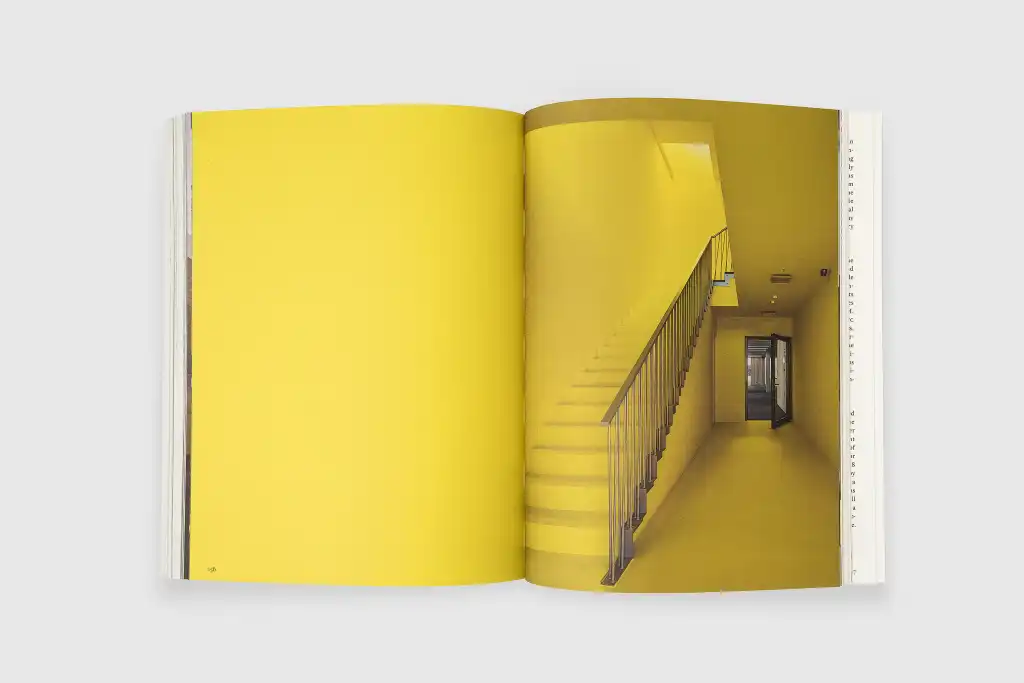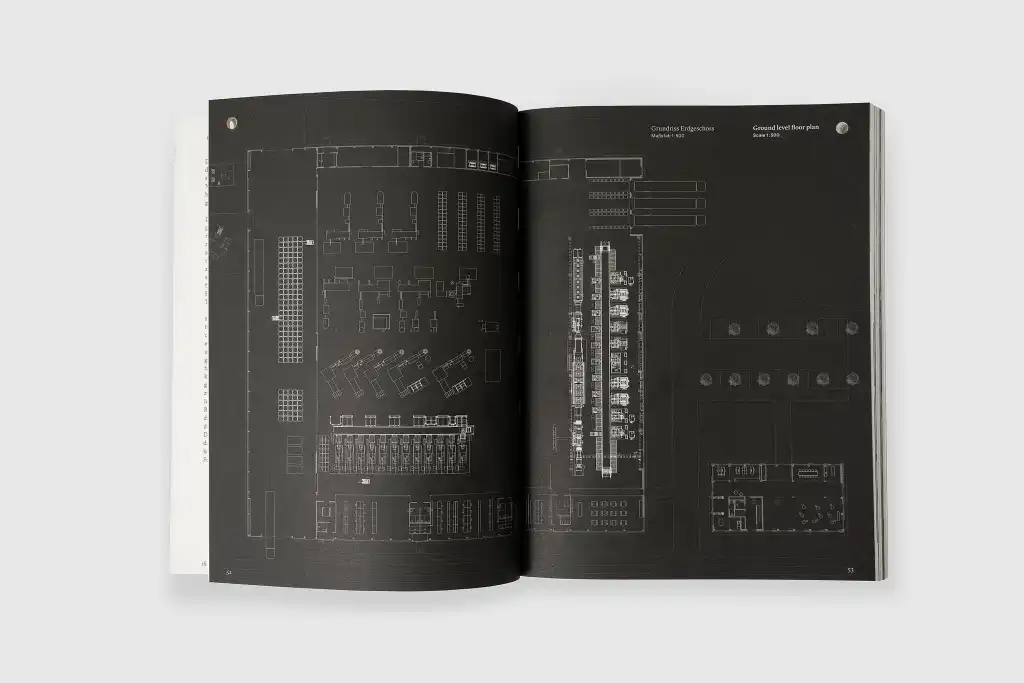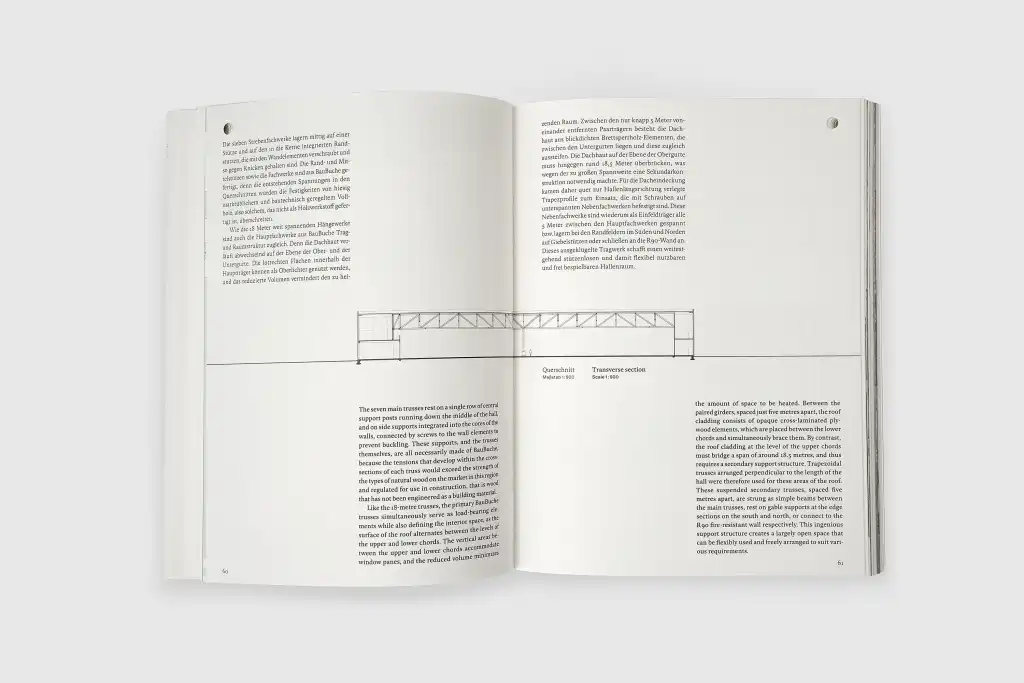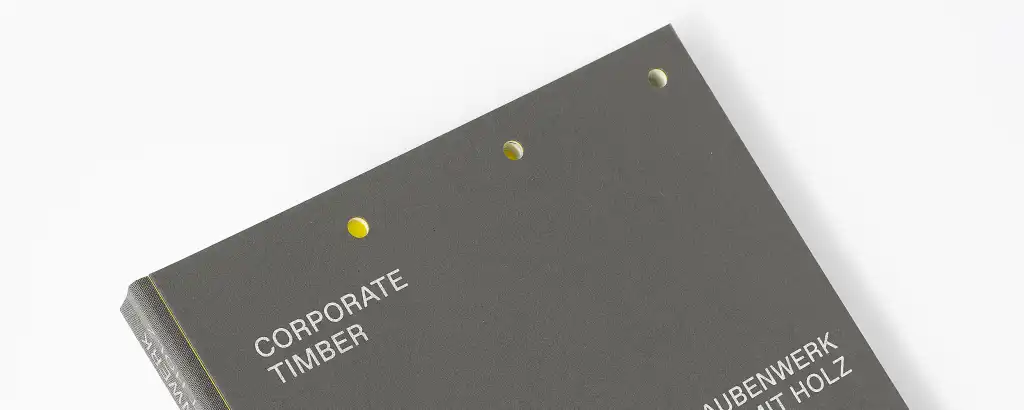114
Corporate Timber
Architectural book with perforation
| Title | Corporate Timber |
|---|---|
| Year | 2021 |
| Client | SWG Schraubenwerk Gaisbach GmbH - Geschäftsbereich Produktion |
| Photographer | Marc Lins, Vienna; Angela Lamprecht, Bregenz |
| Editor | Marko Sauer |
| Architects | HK Architekten, Schwarzach |
| Producing | Buchdruckerei Lustenau |
| Length | 192 pages |
| Publisher | DETAIL – Business Information GmbH, München / Munich |
The new SWG production building in Waldenburg blazes new trails in the structural use of timber for an industrial building. The innovative structure of the roof to the hall requires almost no columns and represents a pioneering achievement in structural timber engineering. The junctions of the delicate structural members were made using the completely new timber-based material “BauBuche” and the highly specialised SWG Assy screws – and it is precisely this high-tech product that will be manufactured here in the future. The title “Corporate Timber” is a reference to the way in which the architecture links the choice of material, the efficiency, and the corporate philosophy of this screw manufacturer. Reason enough to produce a comprehensive publication about this building with the support of the well-known German construction publishers DETAIL, specialist journalist Marko Sauer as editor, and other excellent authors.
The “script“ for structuring the contents was based on the way in which a woodscrew is used: putting in place – screwing in – connecting. The visual expression of this takes the form of triple punched holes that start at the cover and continue through the book to different depths. This three-dimensional intervention is something completely new in bibliophile book design and, as well as having a strong visual impact, it also guides the user. Each of the three punched holes ends precisely where the respective chapter begins. In three steps the approach to the building project, the materialisation, and structural innovations, as well the architecture are presented as a whole. Texts in both German and English accompany the series of images as well as self-explanatory plan drawings specially conditioned for the printed matter. Diagram graphics that are reduced to essentials function as a didactic aid for complex research work on a life cycle assessment of the building.






